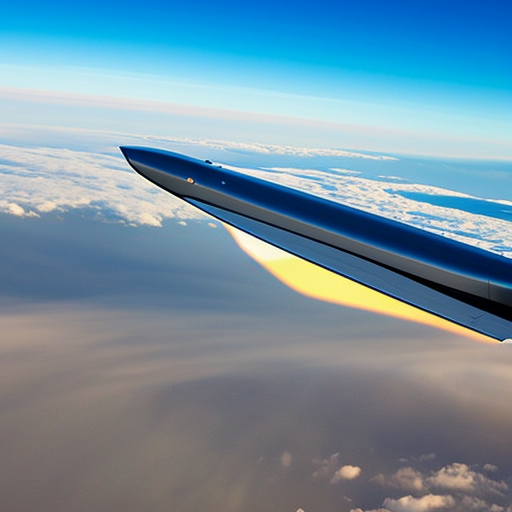Hypersonic flight: Hypersonic flight refers to the ability to travel at speeds greater than Mach 5, or five times the speed of sound. It involves overcoming significant technical challenges, such as high temperatures and pressures, aerodynamic heating, and structural integrity. Hypersonic flight has the potential to revolutionize transportation and military capabilities by drastically reducing travel times and enabling rapid response capabilities.
1. The basics of hypersonic flight
Hypersonic flight is achieved by using vehicles that can sustain speeds greater than Mach 5. These vehicles typically use rocket engines or scramjets, which are air-breathing engines that operate efficiently at hypersonic speeds. The extreme speeds involved in hypersonic flight result in unique aerodynamic and thermal challenges.
2. Challenges of hypersonic flight
One of the main challenges of hypersonic flight is aerodynamic heating. As the vehicle moves through the atmosphere at high speeds, the air molecules collide with its surface, generating intense heat. This heat can reach temperatures of several thousand degrees Celsius, which can damage or destroy the vehicle if not properly managed.
Another challenge is structural integrity. The high speeds and temperatures experienced during hypersonic flight put immense stress on the vehicle’s structure. Materials must be able to withstand these extreme conditions without deforming or failing. Additionally, the vehicle must be able to maintain stability and control in the highly dynamic and turbulent hypersonic environment.
3. Applications of hypersonic flight
Hypersonic flight has numerous potential applications in both civilian and military sectors. In the civilian sector, hypersonic flight could revolutionize air travel by drastically reducing travel times. For example, a hypersonic aircraft could travel from New York to Tokyo in just a few hours, compared to the current flight time of around 14 hours. This would open up new possibilities for business, tourism, and emergency response.
In the military sector, hypersonic flight offers significant advantages. Hypersonic missiles could travel at speeds that make them extremely difficult to intercept, providing a rapid and effective means of delivering payloads. Hypersonic reconnaissance aircraft could gather real-time intelligence over vast areas in a short amount of time. Additionally, hypersonic flight could enable rapid deployment of military forces, allowing for quick response to emerging threats.
4. Current developments and future prospects
Several countries, including the United States, China, and Russia, are actively pursuing hypersonic flight technology. The United States has conducted successful tests of hypersonic vehicles, including the X-51 Waverider and the Hypersonic Technology Vehicle 2 (HTV-2). China has also made significant progress in this field, with successful tests of the DF-ZF hypersonic glide vehicle. Russia has developed the Avangard hypersonic glide vehicle, which is capable of speeds up to Mach 27.
The development of hypersonic flight technology is still in its early stages, and there are many technical and operational challenges that need to be overcome. However, the potential benefits of hypersonic flight are significant, and researchers and engineers are working to address these challenges. With continued advancements in materials, propulsion systems, and aerodynamics, hypersonic flight could become a reality in the near future.
In conclusion, hypersonic flight refers to the ability to travel at speeds greater than Mach 5. It presents unique challenges, such as aerodynamic heating and structural integrity, but also offers numerous applications in both civilian and military sectors. Ongoing research and development efforts are focused on overcoming these challenges and realizing the potential of hypersonic flight.












